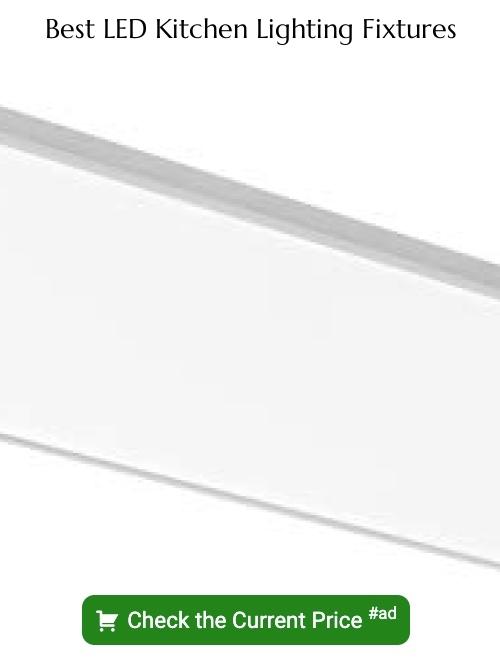Last updated on
Discover the perfect light temperature for your kitchen to create a welcoming and functional space for cooking, dining, and socializing.
The kitchen is the heart of any home. It’s where we gather to cook, eat, and share stories with loved ones.
But have you ever noticed that the lighting in your kitchen can affect your mood and even alter the appearance of your food? That’s right! The temperature of light in your kitchen plays a crucial role in creating an inviting atmosphere while also enhancing functionality. In this article, we’ll explore what light temperature for a kitchen is best suited for different needs and how you can achieve the perfect balance between form and function.
So let’s dive right in!
Key takeaways:
- Warm white light (2700K-3000K) creates a cozy atmosphere in dining areas.
- Cool white light (4000K-5000K) is perfect for task lighting in food preparation areas.
- LED bulbs have various color temperatures to choose from.
- Personal preference influences the choice between warm or cool lighting.
- Layering different light sources creates a balanced and inviting atmosphere.
What's Inside
Kitchen Lighting Basics
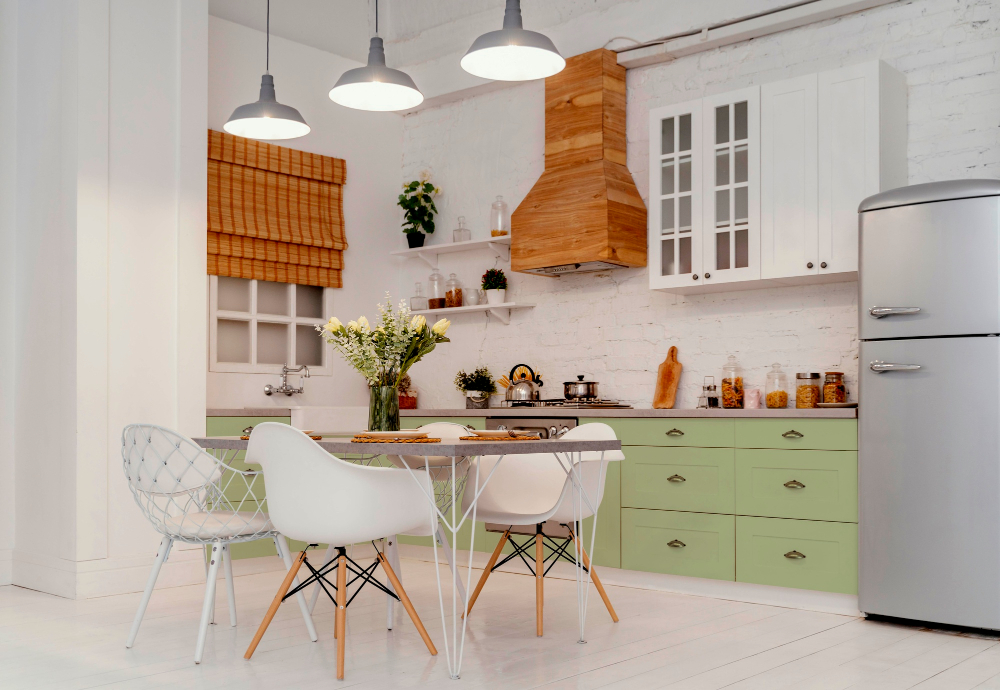
When it comes to kitchen lighting, there are three main types of lighting that you should consider: task, ambient, and accent. Task lighting is essential for illuminating specific areas where you need bright light to perform tasks such as cooking or chopping vegetables.
Ambient lighting provides overall illumination in the room and creates a warm and inviting atmosphere. Accent lighting adds depth and dimension by highlighting specific features such as artwork or architectural details.
To achieve the perfect balance between these three types of lights, it’s important to layer your kitchen’s light sources effectively. This means using different fixtures at varying heights throughout the space to create an even distribution of light.
Another crucial aspect when considering kitchen lighting is color temperature measured in Kelvin (K). The right color temperature can make all the difference in creating a comfortable ambiance while also enhancing functionality.
Types of Light Bulbs
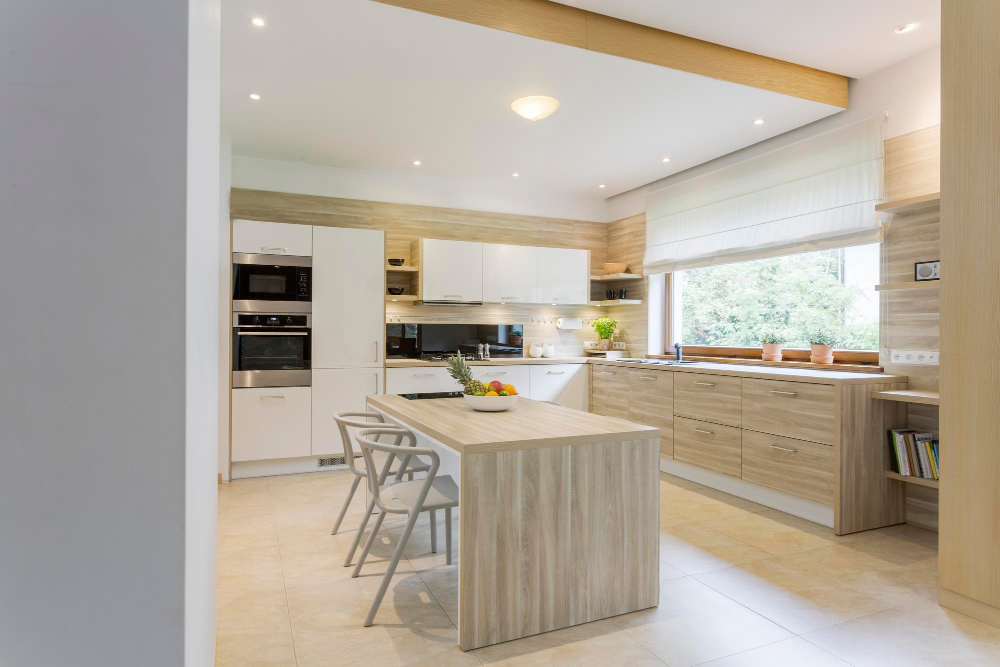
There are several types of bulbs available in the market, each with its own set of advantages and disadvantages. The most common types include incandescent, halogen, fluorescent and LED bulbs.
Incandescent bulbs are traditional light sources that produce a warm glow but consume more energy than other options. Halogen lights are similar to incandescents but last longer and use less energy.
Fluorescent lights have been around for decades and offer bright white light while using less electricity than incandescents or halogens. However, they can be slow to start up when turned on.
LEDs (Light Emitting Diodes) have become increasingly popular due to their long lifespan (upwards of 25 years), low heat output and high efficiency in terms of lumens per watt consumed. They come in various color temperatures ranging from warm yellowish tones (2700K) all the way up to cool blue-white hues (5000K).
Understanding Kelvin Scale
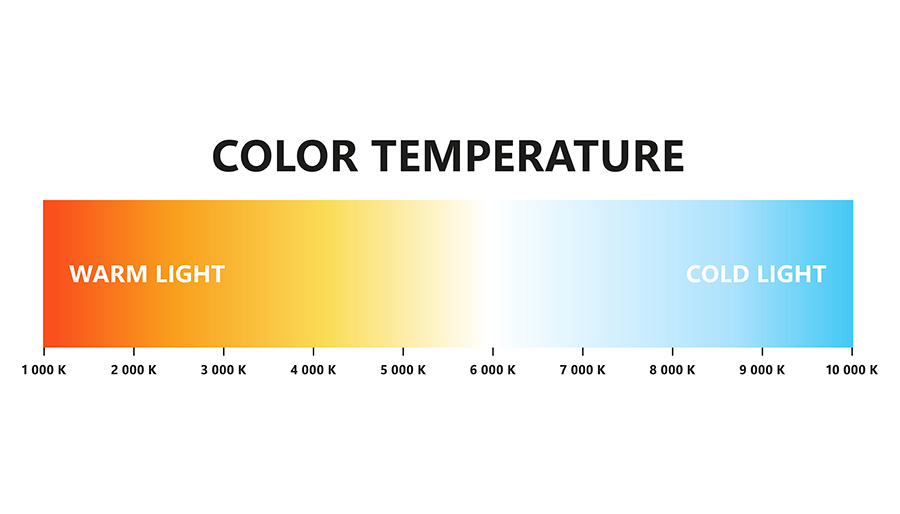
The Kelvin (K) scale measures the color temperature of light sources and ranges from warm yellow to cool blue-white hues. The lower end of this spectrum is considered “warm,” while higher temperatures are labeled as “cool.”.
In general, warmer colors create a cozy and inviting atmosphere, while cooler tones provide an energizing effect that can help you stay alert and focused.
When it comes to choosing lighting for your kitchen, understanding how different temperatures affect your space is crucial. You want to select bulbs that will complement both your decor style and functional needs.
Ideal Light Temperatures
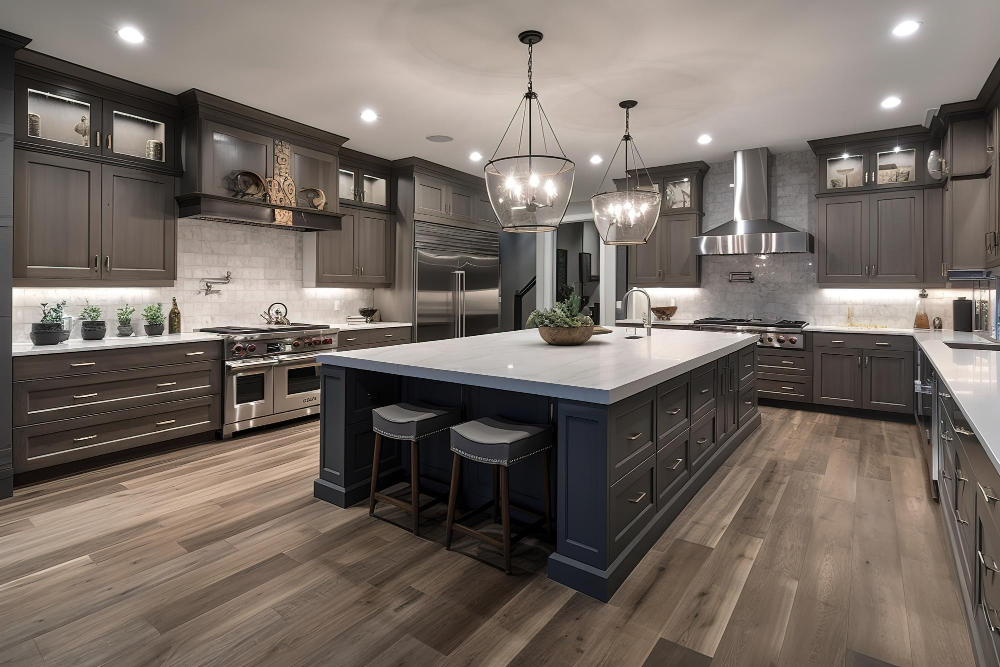
Generally, warm white light with a color temperature of 2700K to 3000K is suitable for creating a cozy atmosphere in dining areas or when entertaining guests. On the other hand, cool white light with a color temperature between 4000K to 5000K is perfect for task lighting in food preparation areas.
It’s important to note that different types of bulbs emit varying degrees of warmth or coolness. For instance, LED lights are available in various shades ranging from warm yellow tones (2700-30000k) to bright daylight hues (50000k).
Halogen bulbs produce warmer colors while fluorescent tubes tend towards cooler temperatures.
When selecting your kitchen lighting fixtures and bulbs, consider how you want each area illuminated and choose accordingly based on its function. You can also mix different bulb types within one fixture or use multiple fixtures with varying temperatures throughout your kitchen space.
3000K or 4000K for a Kitchen
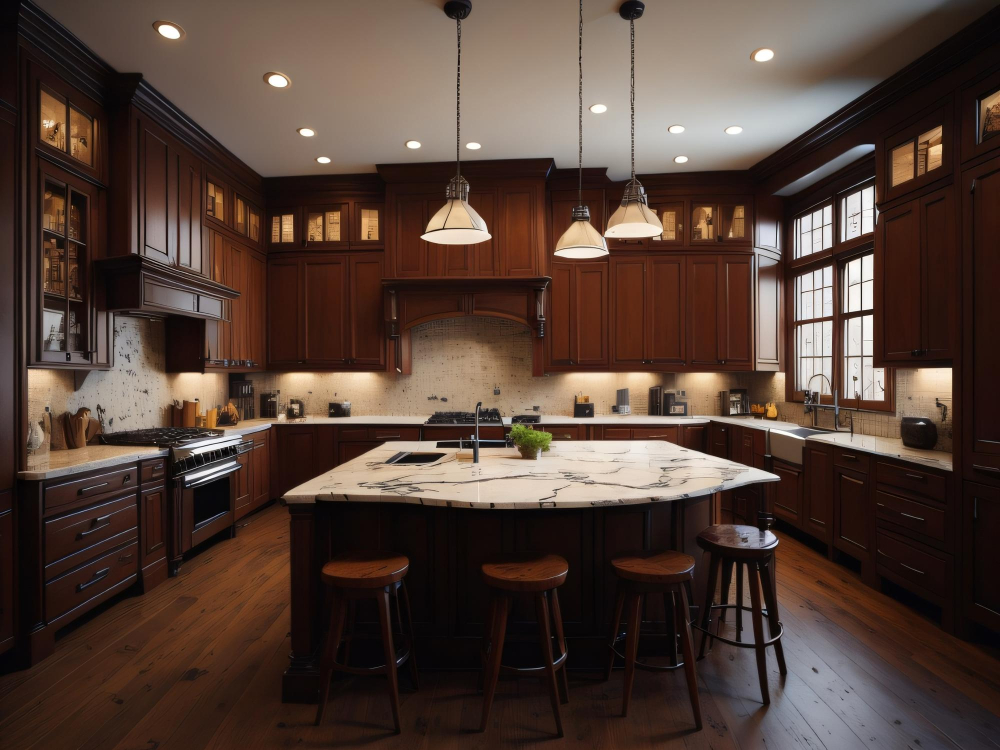
The answer depends on your personal preference and how you use your kitchen.
If you prefer a warmer, cozier atmosphere in your kitchen, then 3000K might be the ideal choice for you. This temperature range creates a soft yellowish-white glow that mimics natural sunlight during sunrise or sunset hours.
It’s perfect for creating an inviting ambiance while cooking and dining with family and friends.
On the other hand, if functionality is more important to you than ambiance alone, then consider using lights with a color temperature of around 4000K instead. This range produces a brighter white light that enhances visibility in task areas such as countertops and stovetops without being too harsh on eyesight.
4000K or 5000K for a Kitchen
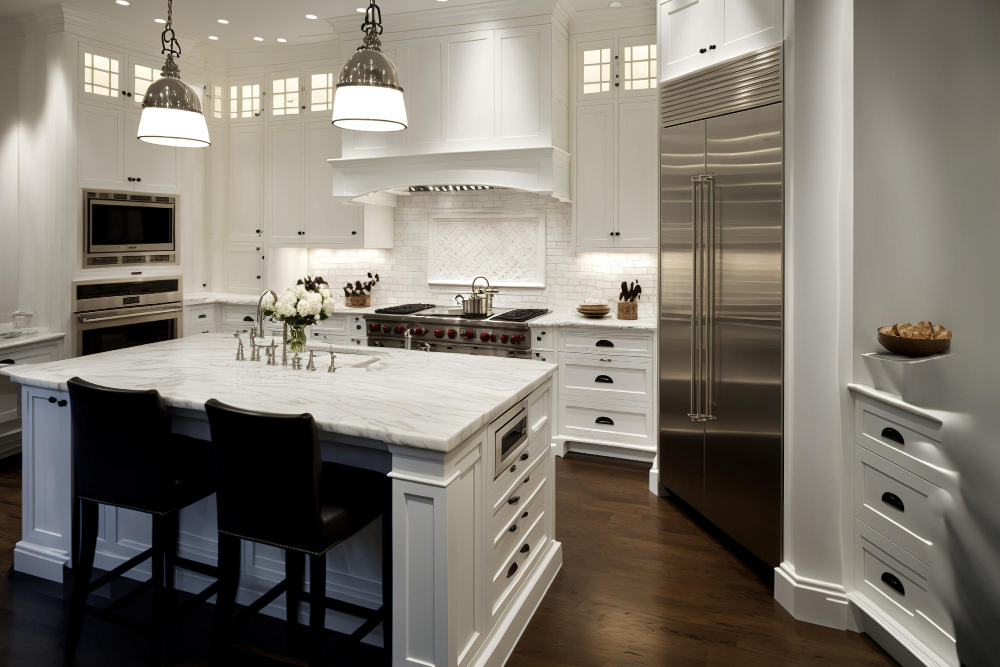
Both temperatures are considered cool white and provide a bright and energizing atmosphere in your kitchen. However, there are some differences between them that can affect how they make your space look.
A 4000K light temperature is often recommended for kitchens because it strikes a balance between warm and cool tones. It provides enough brightness to illuminate workspaces while also creating a cozy ambiance that’s perfect for dining with family or friends.
On the other hand, if you prefer brighter lighting in your kitchen, then opting for a 5000K light temperature may be more suitable. This cooler tone of white will give off an energetic vibe that can help boost productivity when cooking meals or doing tasks like chopping vegetables.
Ultimately, deciding on which one to choose depends on personal preference as well as what kind of activities take place in the room most frequently.
Task Lighting Tips
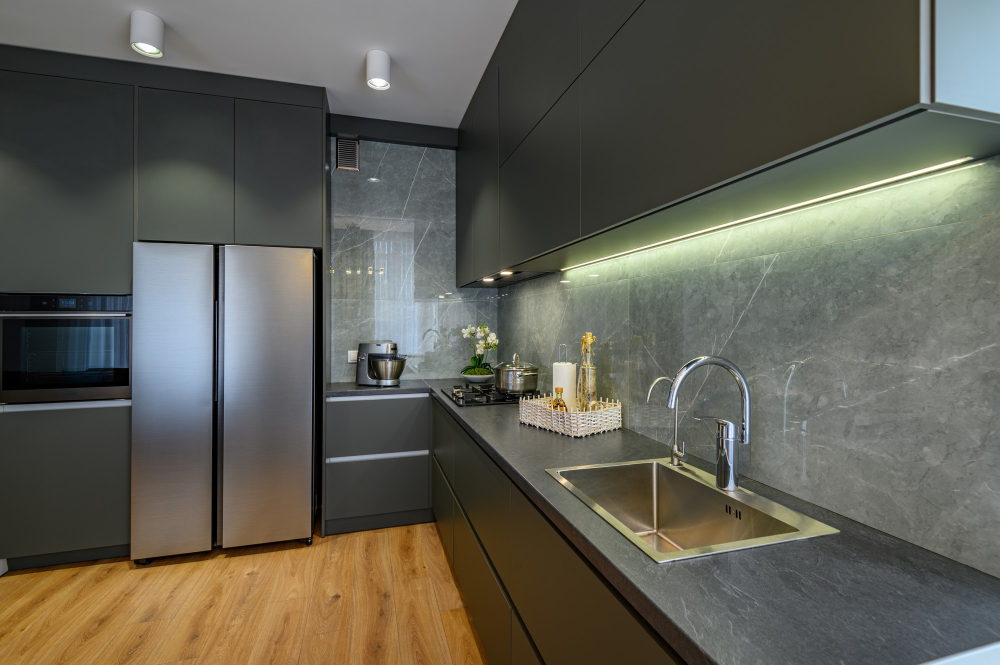
It provides focused illumination for specific tasks such as chopping vegetables or reading recipes. Task lights should be placed in areas where you need the most light, such as above the stove and sink.
Under-cabinet lights are a popular choice for task lighting in kitchens because they provide direct light onto countertops without casting shadows. They also add a warm ambiance to your kitchen when used with dimmer switches.
Pendant lights are another great option for task lighting over islands or dining tables. They come in various styles and sizes that can complement any decor style while providing ample illumination.
When choosing your task lights, consider their color temperature and brightness level carefully. A cool white light (4000K) is ideal for food preparation areas since it mimics natural daylight and makes it easier to see colors accurately while cooking.
Ambient Lighting Guide
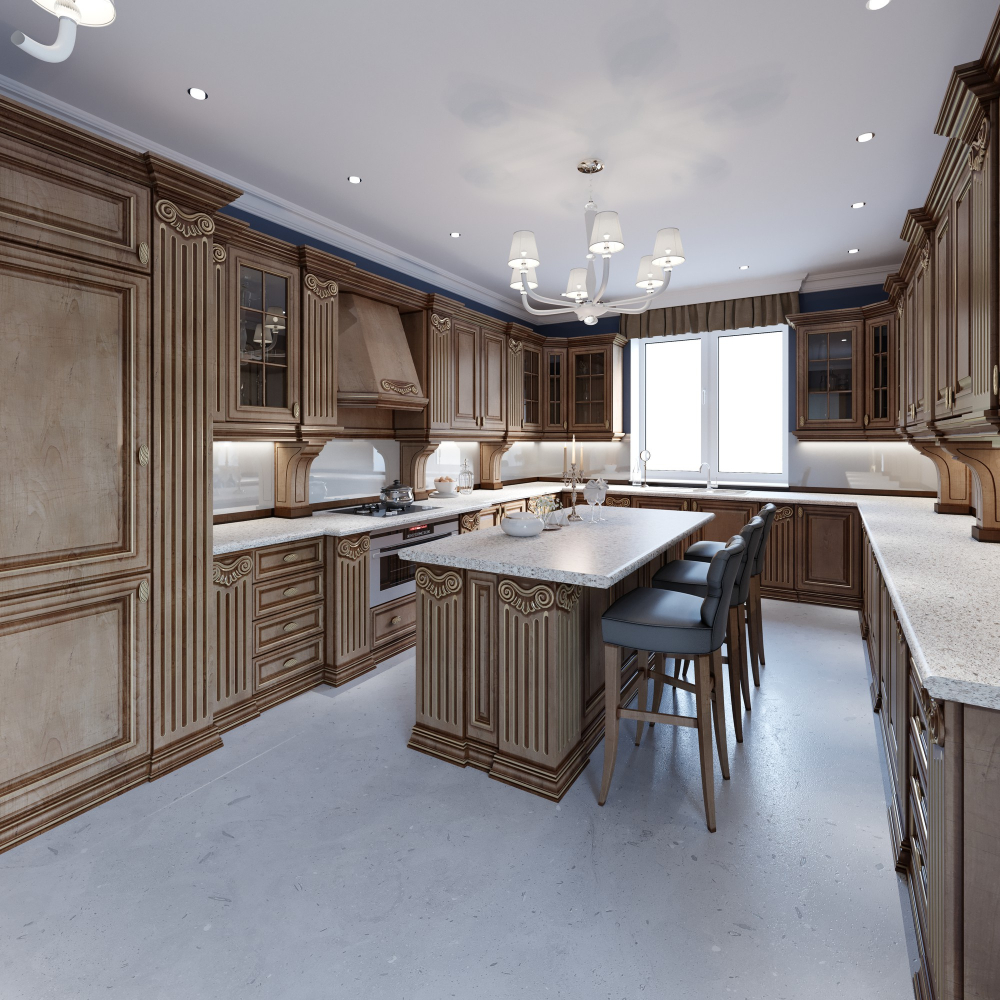
It provides overall illumination and sets the mood for your space. When it comes to ambient lighting in a kitchen, you want to ensure that it’s bright enough for cooking tasks but not too harsh on your eyes.
One way to achieve this balance is by using dimmer switches or smart bulbs that allow you to adjust the brightness according to your needs. Another option is installing recessed lights or track lighting fixtures with adjustable heads so that you can direct light where needed.
If you have an open-plan layout, consider using pendant lights over an island or dining table as they provide both task and ambient lighting while also adding visual interest.
When choosing ambient light bulbs for a kitchen, look for those with a color temperature between 2700K-4000K as they create warm and inviting ambiance without being too yellowish or bluish. Make sure their CRI (Color Rendering Index) rating is above 80 so that colors appear true-to-life under their glow.
Accent Lighting Techniques
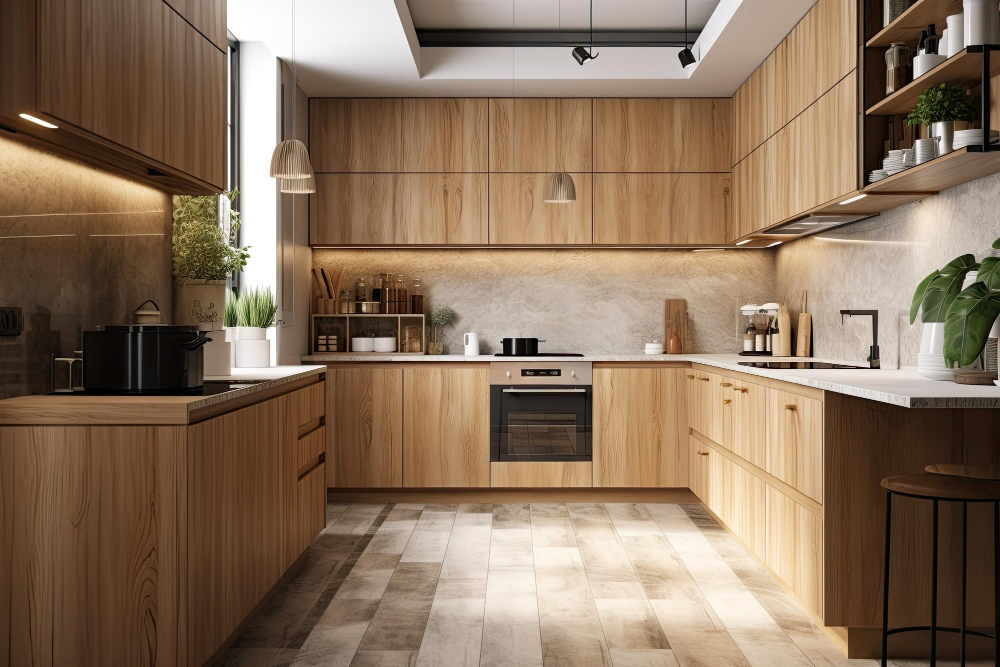
It can highlight specific areas, such as artwork or architectural features, and create a warm ambiance that makes the space feel inviting. There are several accent lighting techniques you can use in your kitchen.
One popular technique is using under-cabinet lights to illuminate countertops and backsplashes. This not only adds visual interest but also provides task lighting for food preparation.
Another technique is installing pendant lights over an island or dining table. These fixtures provide both ambient light and serve as decorative elements that enhance the overall design of your kitchen.
You can also use track lighting to highlight specific areas of the room, such as a collection of cookbooks on open shelving or a statement piece like an antique vase on display.
When it comes to accent lighting in the kitchen, remember less is more! Too many focal points will make your space look cluttered rather than cozy.
Layering Kitchen Lights
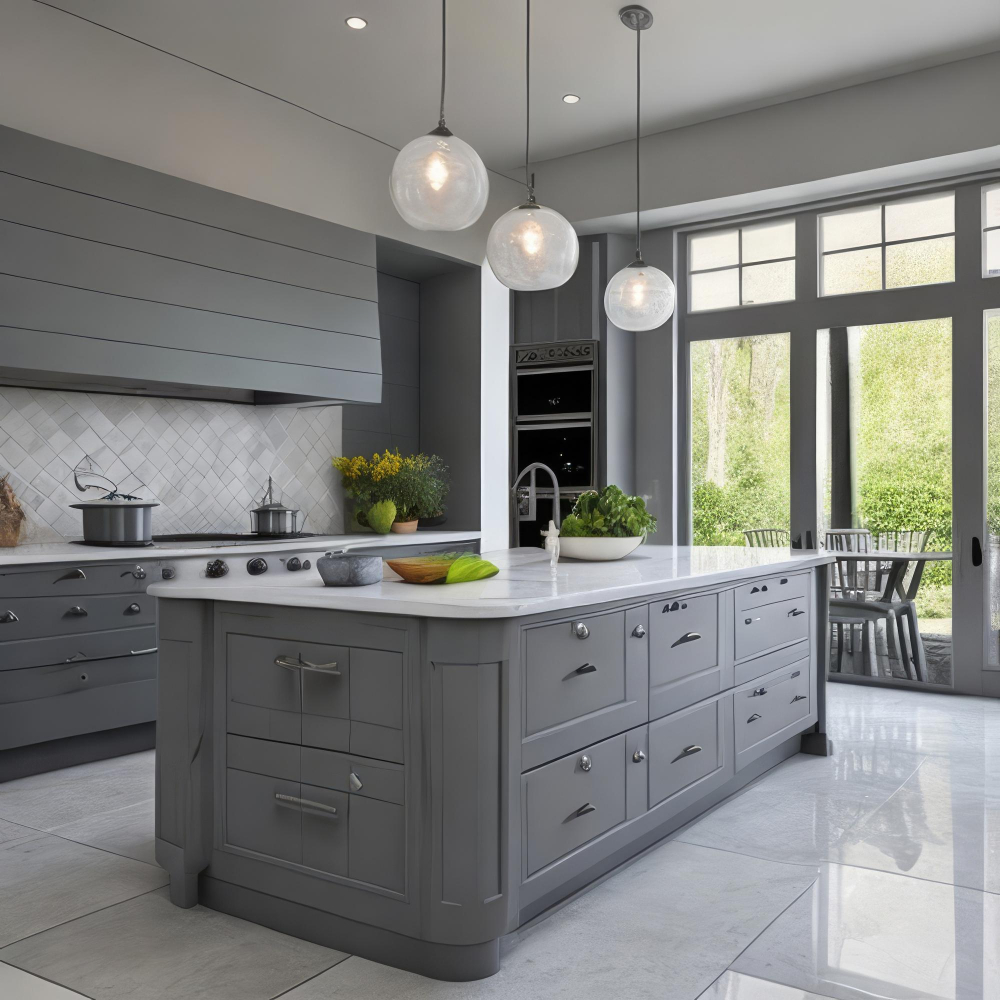
Layered lighting involves using multiple light sources at varying heights and angles to create a warm, inviting atmosphere while also providing adequate task lighting.
Start by installing overhead ambient lights that provide general illumination throughout the space. This could be achieved with recessed or flush mount fixtures that distribute light evenly across the room.
Next, add task lights such as under-cabinet or pendant lights above work areas like countertops and islands. These will help you see what you’re doing while preparing food or cooking.
Incorporate accent lights such as wall sconces or track lighting to highlight architectural features like backsplashes or artwork on display in your kitchen.
Natural Light Vs. Artificial Light

Not all kitchens have access to natural light sources such as windows or skylights. In this case, artificial lighting can be used to mimic the effects of natural light.
While natural light provides a warm and welcoming ambiance during the day, it may not always be sufficient for cooking tasks that require more focused illumination in specific areas of your kitchen. Artificial lights can provide targeted task lighting where needed while also creating ambient lighting throughout the space.
It’s important to note that both types of lighting have their advantages and disadvantages when it comes to illuminating your kitchen. Natural daylight changes throughout the day depending on weather conditions outside which means you’ll need additional artificial lights at night or on cloudy days.
On the other hand, artificial lights are available 24/7 but they don’t offer any health benefits like vitamin D production from sunlight exposure does.
Using Warm or Cool Color Temperatures
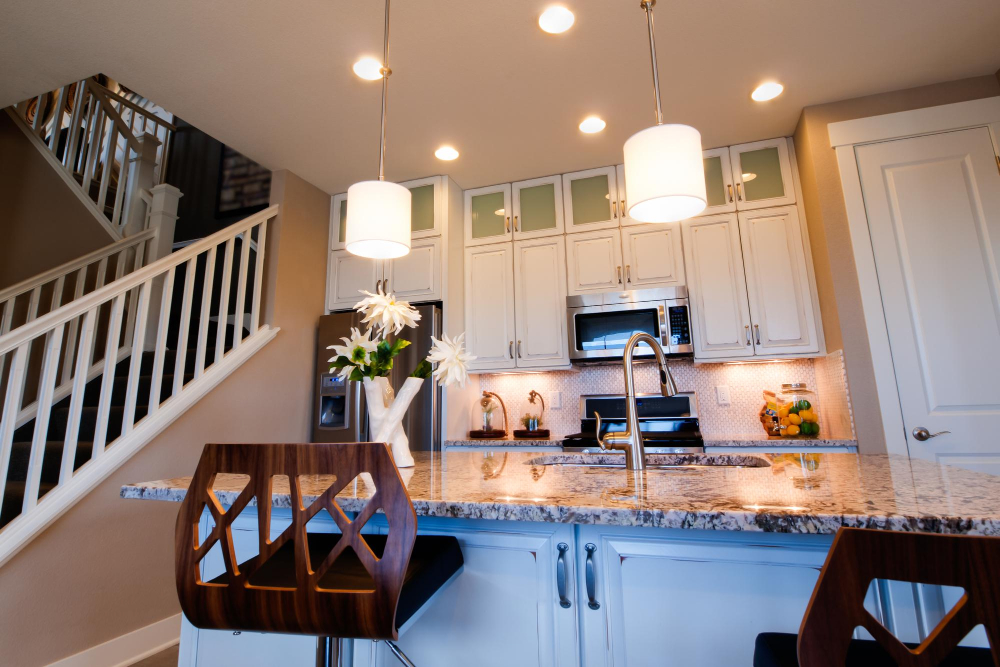
Warm colors have a yellowish hue that creates a cozy and inviting atmosphere, while cool colors have a bluish tint that provides an energizing and refreshing effect.
Warm color temperatures (2700K-3000K) work well in traditional kitchens with wooden cabinets and warm-toned countertops. They create an intimate ambiance perfect for cooking hearty meals on cold winter nights.
On the other hand, cool color temperatures (4000K-5000K) are ideal for modern kitchens with stainless steel appliances and granite countertops as they provide crisp white light that enhances their sleek design.
However, keep in mind that personal preference plays a significant role when selecting between warm or cool lighting tones. You can also experiment by using both types of lights to create contrast within your kitchen space.
Understanding how different light temperature affects the mood of your kitchen is essential when designing its lighting scheme.
How Does Lighting Affect Kitchen Cabinet Color
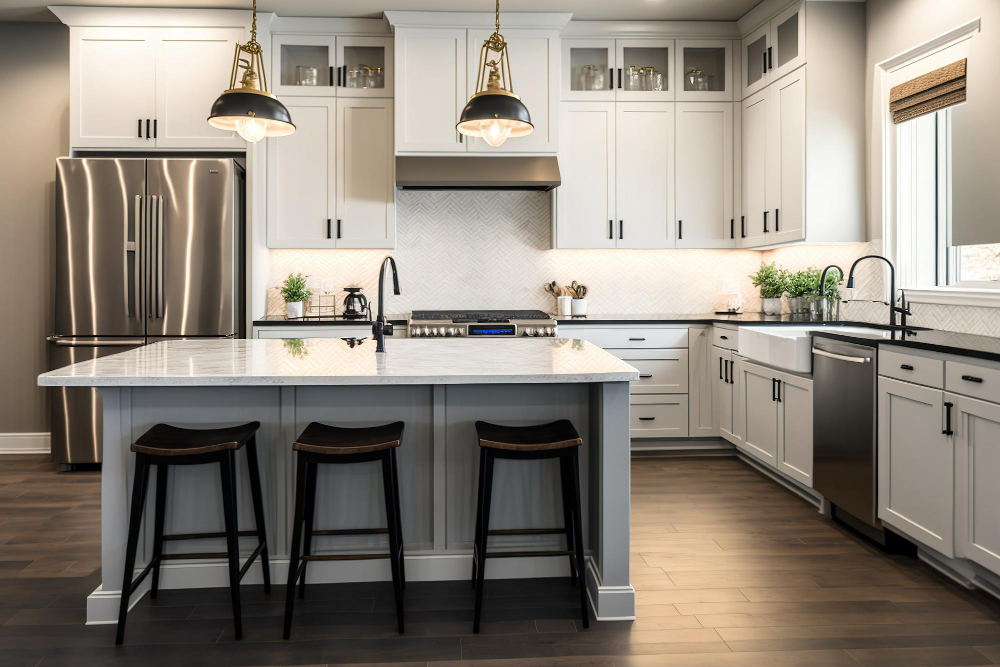
The wrong light temperature can make your cabinets appear dull or washed out, while the right one will enhance their natural beauty and complement other elements in your kitchen. For instance, if you have white or light-colored cabinets, warm lighting with a yellowish hue may create an inviting and cozy atmosphere.
On the other hand, cool lighting with blue undertones may give them a more modern and sleek look.
Similarly, dark-colored cabinetry such as espresso or cherry wood might benefit from cooler temperatures that bring out their rich tones without making them look too heavy or overwhelming. It’s essential to consider how different types of bulbs affect colors before choosing one for your kitchen.
Selecting the right light temperature for your kitchen is crucial to creating an inviting space that meets all of its functional needs while enhancing its aesthetic appeal.
Soft White or Daylight for a Kitchen
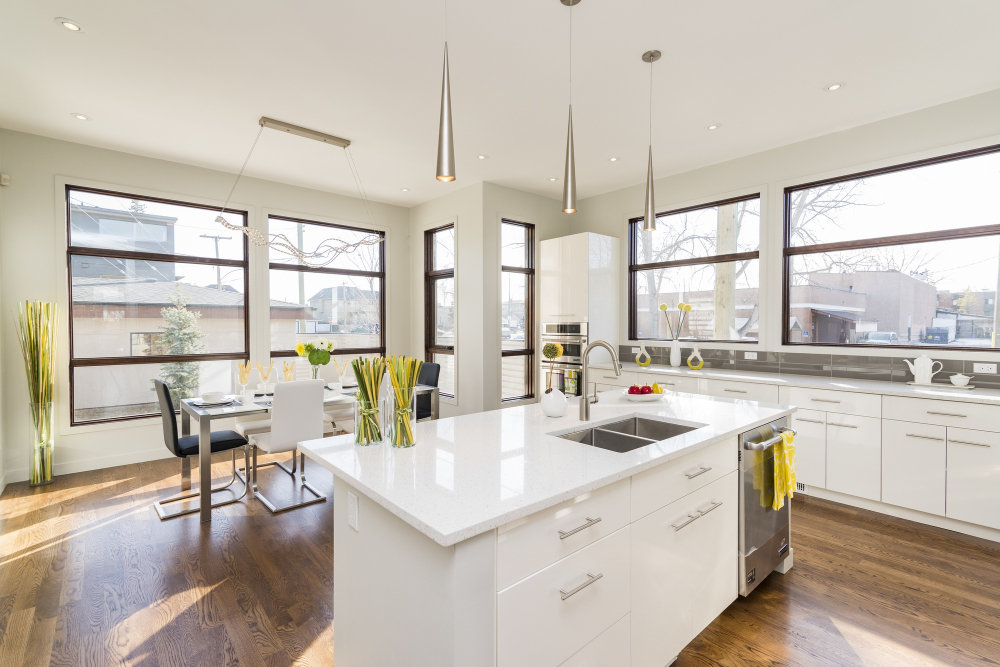
Soft white bulbs have a warm and cozy glow that creates an inviting atmosphere in any room. On the other hand, daylight bulbs emit a bright and crisp light that mimics natural sunlight.
For most kitchens, we recommend using daylight bulbs with temperatures ranging from 5000K to 6500K. This range of color temperature provides ample brightness while also enhancing visibility when cooking or preparing food.
However, if you prefer warmer tones in your kitchen decor and want to create a more relaxed ambiance, then soft white bulbs with temperatures between 2700K-3000K can be an excellent choice as well.
Ultimately it all depends on personal preference; some people might find softer lighting more comfortable while others prefer brighter lights when working in their kitchens.
Color Rendering Index (CRI)
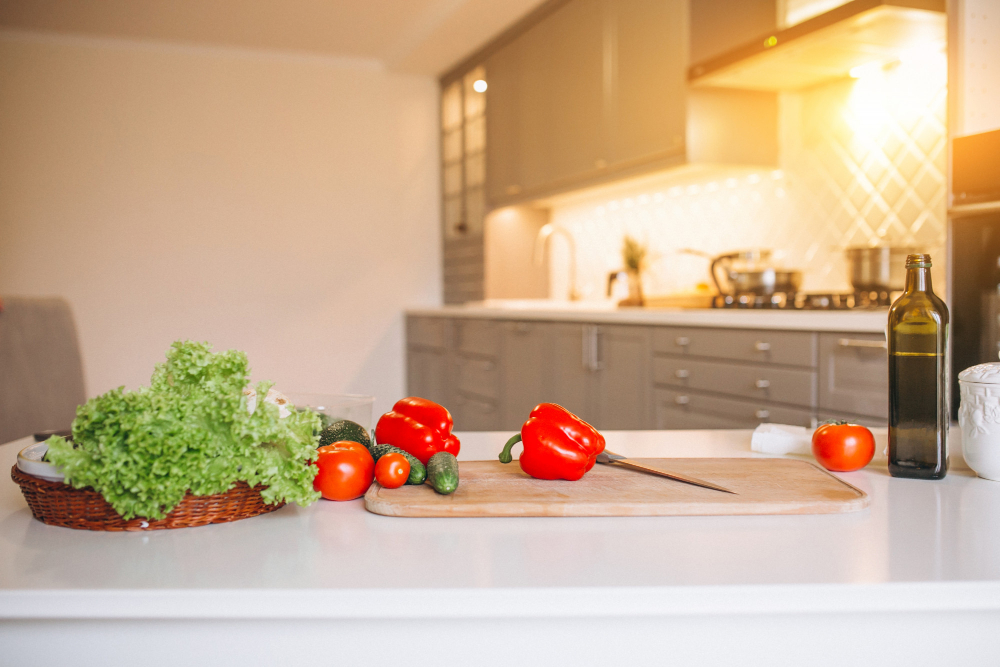
The CRI scale ranges from 0 to 100, with higher numbers indicating better color rendering. In the kitchen, where food preparation and presentation are essential, it’s crucial to choose lighting that has high CRI values.
A high CRI value ensures that the colors of your fruits and vegetables appear vibrant and fresh while also making it easier for you to distinguish between different ingredients. For instance, if you’re preparing sushi or any other dish with raw fish in it, using lights with low CRI values can make the fish look dull or even discolored.
When selecting light bulbs for your kitchen lighting fixtures or recessed cans consider choosing those labeled “high-CR” as they will provide more accurate color representation than standard bulbs.
When designing your kitchen lighting scheme don’t forget about Color Rendering Index (CRI).
Lumens
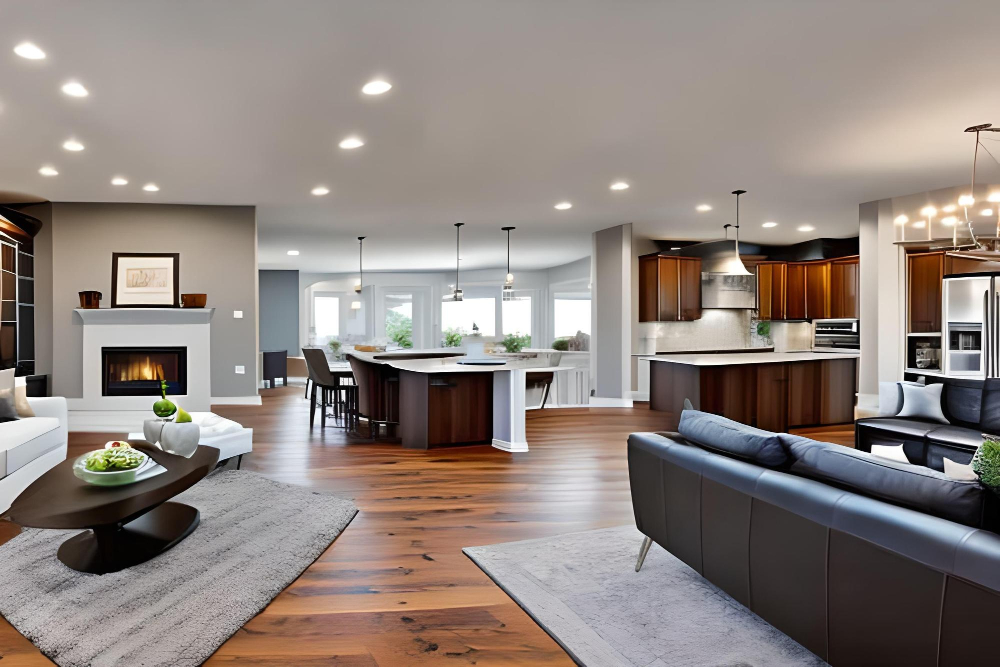
In simpler terms, it’s how bright your light bulb is. The higher the lumens, the brighter your kitchen will be.
When choosing bulbs for your kitchen lighting fixtures, consider both wattage and lumens to ensure you get enough brightness without wasting energy.
For example, if you’re replacing an old 60-watt incandescent bulb with an LED one that has 800 lumens output at 9 watts power consumption; this new LED bulb will provide more brightness while using less electricity than its predecessor.
It’s important to note that different types of bulbs have varying lumen outputs for their respective wattages. For instance, LEDs typically produce more lumens per watt than traditional incandescent or fluorescent lights do.
Choosing Light Fixtures
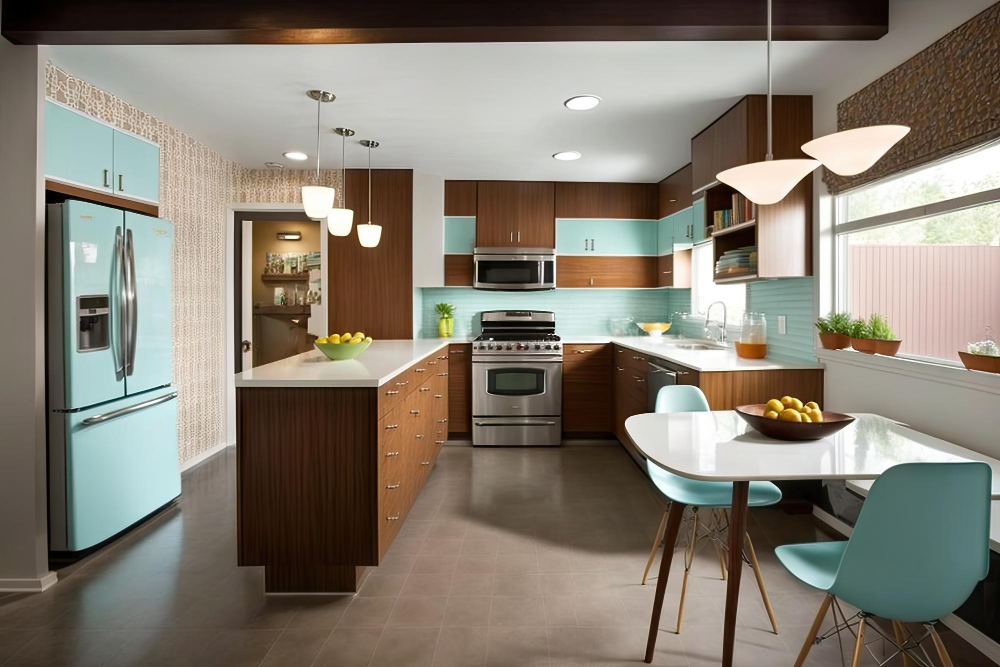
The type of fixture you select will depend on several factors such as ceiling height, room size, and personal preference. Pendant lights are a popular choice for kitchens with high ceilings or islands where task lighting is needed.
Recessed lighting is an excellent option if you want to create a clean and modern look while providing ample illumination throughout the space.
Chandeliers can add elegance and sophistication to any kitchen design but should be used sparingly in smaller spaces or those with low ceilings. Under-cabinet lighting is perfect for illuminating countertops while also adding ambiance during meal prep or entertaining guests.
When selecting light fixtures, consider their style and finish carefully as they can significantly impact your overall decor scheme. Choose finishes that complement other elements in your kitchen such as cabinet hardware or faucet finishes.
Choosing the right light fixture can make all the difference when it comes to creating an inviting atmosphere in your kitchen while also enhancing functionality.
Use Color Selectable Light Fixtures
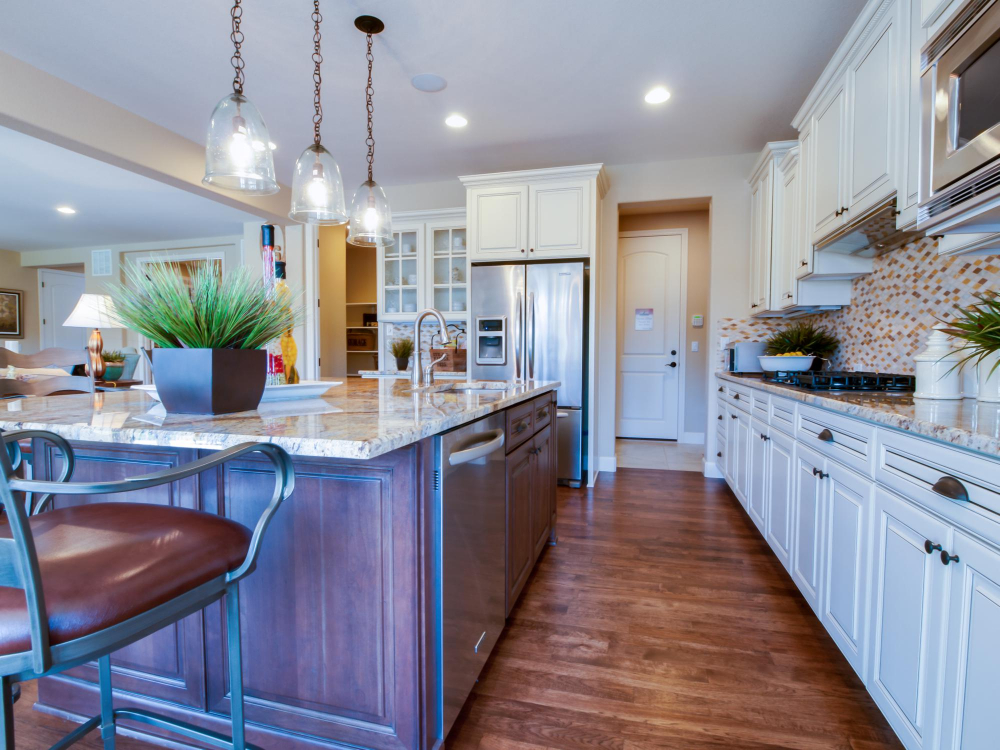
These innovative fixtures allow you to adjust the color temperature of the light they emit, giving you greater control over the ambiance in your kitchen.
Color selectable lights typically offer a range of temperatures from warm white (2700K) to cool daylight (5000K), allowing you to choose the perfect setting for any occasion. For example, if you’re cooking dinner and want a warm and cozy atmosphere, select a warmer temperature like 3000K or 3500K.
If it’s early morning and natural light is scarce, opt for cooler temperatures like 4000k or higher.
One advantage of using color-selectable lights is that they can help regulate our circadian rhythm by mimicking natural sunlight throughout different times of day. This means that during daytime hours when we need more energy and focus on tasks such as cooking or cleaning up after meals; we should use brighter cooler tones while at night time when winding down before bed softer warmer hues are recommended.
Smart Lighting Solutions
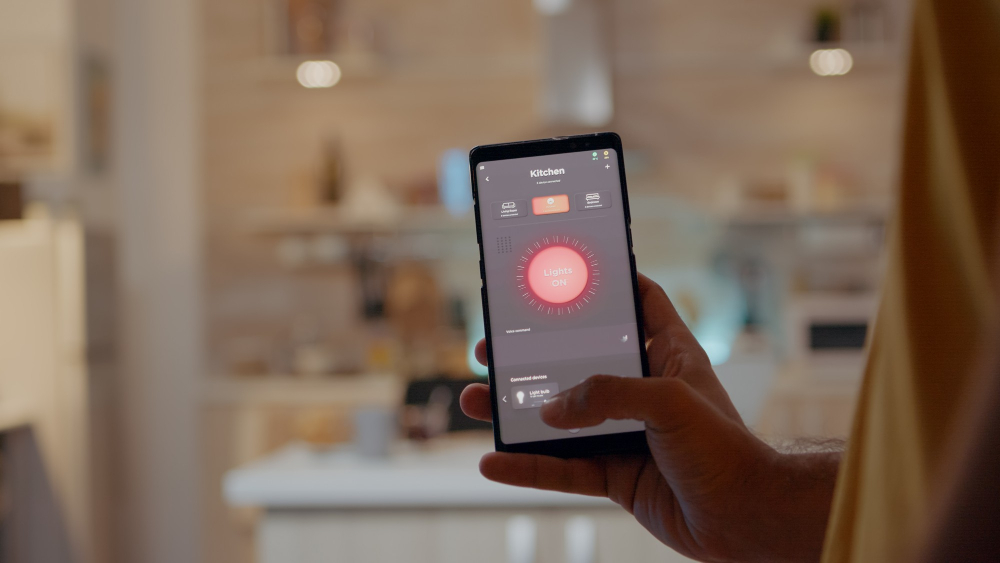
These systems allow you to control your lights remotely using your smartphone or voice commands, making it easier than ever to create the perfect ambiance in your kitchen. With smart lighting, you can adjust the brightness and color temperature of your lights with just a few taps on an app or by giving voice commands to virtual assistants like Amazon Alexa or Google Assistant.
Some smart bulbs even come with built-in motion sensors that turn on when someone enters the room and turn off when no one is around. This feature not only saves energy but also adds convenience as you don’t have to worry about turning off lights manually.
Another advantage of smart lighting is that it allows for scheduling so that specific light settings can be programmed at different times of day automatically. For example, if you prefer warm light during dinner time but cooler light while cooking breakfast early morning – this could all be set up ahead of time without having to remember each day.
Energy Efficiency in Lighting
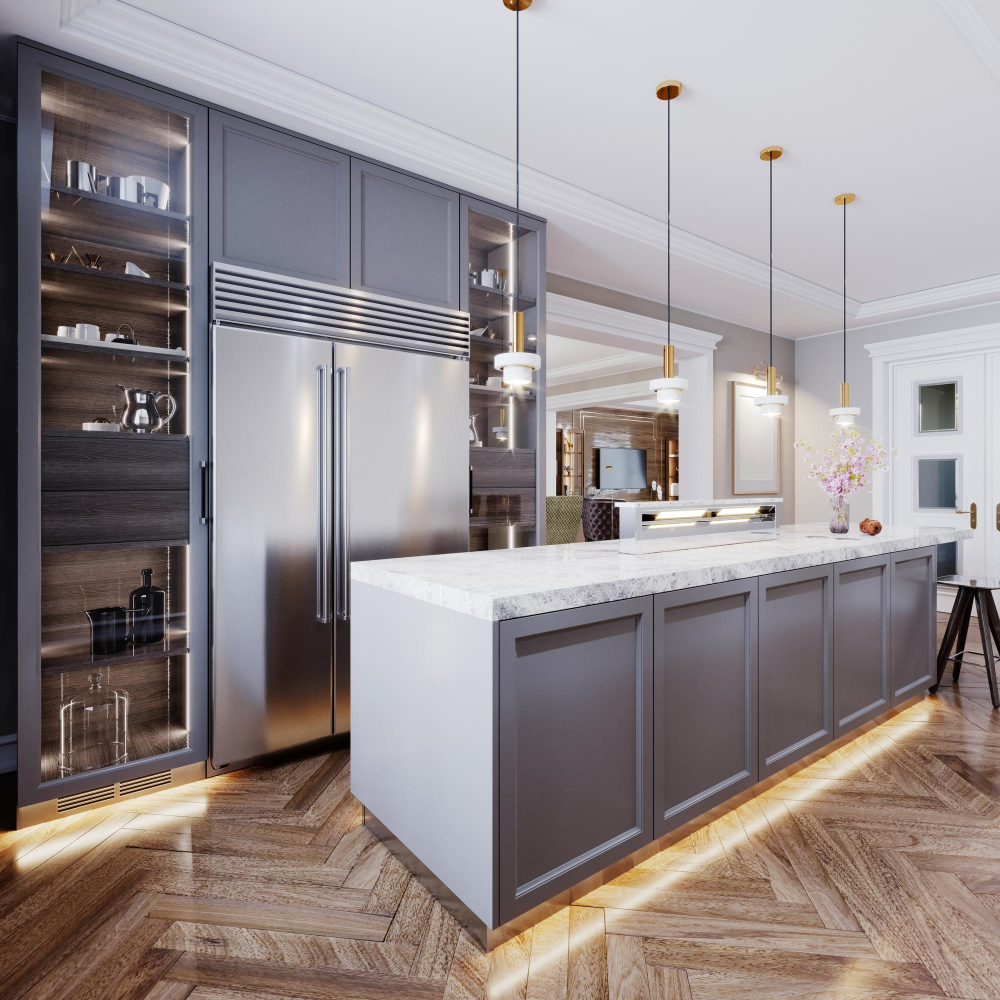
Energy-efficient lighting not only saves you money on electricity bills but also reduces carbon emissions and helps protect the environment. LED bulbs are a popular choice for energy-efficient lighting as they consume less power than traditional incandescent bulbs and last longer.
When selecting LED lights, look for those with an ENERGY STAR rating or equivalent certification that meets high standards of performance and quality. These certifications ensure that the bulb is tested rigorously to meet specific criteria such as brightness, color quality, lifespan, and energy consumption.
In addition to using efficient light bulbs in your kitchen fixtures, you can also install dimmer switches or motion sensors that automatically turn off lights when no one is present in the room. This way you can save even more on electricity costs while still enjoying a well-lit space whenever needed.
By considering both light temperature and energy efficiency when designing your kitchen lighting scheme will help create an inviting atmosphere while reducing environmental impact at home!
FAQ
What color temperature light is best for kitchen?
The best color temperature light for a kitchen is warm white, ranging from 3,000 to 4,000 Kelvin.
Is 3000K or 4000K better for a kitchen?
4000K is better for a kitchen as it provides a cooler, brighter color temperature, creating a more energizing atmosphere.
Should kitchen lights be warm or bright?
Kitchen lights should be bright, as it is optimal for reading recipes, prepping food, and other cooking tasks.
Is 4000K or 5000K better for kitchen?
5000K is better for kitchens with white cabinetry and a modern to transitional style, as 4000K can give a warmer tone that may “pink out” white cabinets.
How does light temperature impact the overall ambiance of a kitchen?
Light temperature significantly influences the ambiance of a kitchen by creating cooler or warmer atmospheres through different color temperatures, enhancing functionality, and producing comfortable spaces.
How do different light temperatures affect food preparation and cooking tasks in the kitchen?
Different light temperatures affect food preparation and cooking tasks in the kitchen by providing optimal visibility and color accuracy for various activities, with cooler light temperatures being ideal for food preparation and warmer light temperatures enhancing the overall ambiance and presentation.
Are there specific lighting recommendations depending on the kitchen’s design and color scheme?
Yes, lighting recommendations depend on the kitchen’s design and color scheme, with proper balance between natural light, task lighting, and accent lighting essential for enhancing the aesthetics and functionality of the space.
